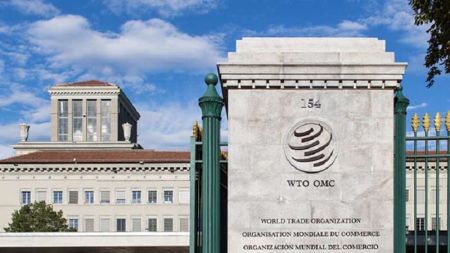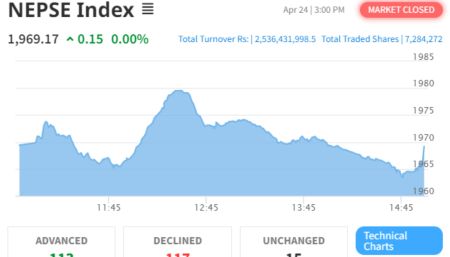April 23: The coronavirus (COVID-19) pandemic induced economic crisis will cause remittances to Nepal decline by 14 percent in 2020 compared to USD 8.1 billion in 2019, according to a new World Bank report.
In its ‘Migration and Development Brief 32: COVID-19 Crisis Through a Migration Lens’, the Washington DC-based multilateral agency projects that the South Asia region will see remittance inflow decreasing by 22.1 percent in 2020. The World Bank has said that this is the biggest slump of remittance to the region in the recent history.
“In India, remittances are projected to fall by about 23 percent in 2020, to USD 64 billion – a striking contrast with the growth of 5.5 percent and receipts of USD 83 billion seen in 2019. In Pakistan, the projected decline is also about 23 percent, totaling about USD 17 billion, compared with a total of USD 22.5 billion in 2019, when remittances grew by 6.2 percent,” the report states. The report estimates that remittances to Bangladesh will dip by about 22 percent to USD 14 billion from USD 22 billion in 2019. Remittances to Sri Lanka are expected to decline by 19 percent this year.
“The coronavirus‐related global slowdown and travel restrictions will also affect migratory movements, and this is likely to keep remittances subdued even in 2021,” reads the report. According to the World Bank, the projected remittance growth of 5.8 percent in 2021 will keep total regional flows at about USD 115 billion.
Globally, remittances will decline by about 20 percent this year. According to the report, remittances to low and middle-income countries (LMICs) are projected to fall by 19.7 percent to USD 445 billion, representing a loss of a crucial financing lifeline for many vulnerable households.
The large decline in remittances flows in 2020 comes after remittances to LMICs reached a record USD 554 billion in 2019. The report highlights that even with the decline, remittance flows are expected to become even more important as a source of external financing for LMICs as the fall in foreign direct investment is expected to be larger (more than 35 percent). “In 2019, remittance flows to LMICs became larger than FDI, an important milestone for monitoring resource flows to developing countries,” says the report.
“Remittances are a vital source of income for developing countries. The ongoing economic recession caused by COVID-19 is taking a severe toll on the ability to send money home and makes it all the more vital that we shorten the time to recovery for advanced economies,” a statement issued by the World Bank Group quoted the bank’s President David Malpass as saying. “Remittances help families afford food, healthcare, and basic needs. As the World Bank Group implements fast, broad action to support countries, we are working to keep remittance channels open and safeguard the poorest communities’ access to these most basic needs.”
According to the statement, the World Bank is assisting member states in monitoring the flow of remittances through various channels, the costs and convenience of sending money, and regulations to protect financial integrity that affect remittance flows. “It is working with the G20 countries and the global community to reduce remittance costs and improve financial inclusion for the poor,” says the bank.
Remittance flows are expected to fall across all regions, most notably in Europe and Central Asia (27.5 percent), followed by Sub-Saharan Africa (23.1 percent), South Asia (22.1 percent), the Middle East and North Africa (19.6 percent), Latin America and the Caribbean (19.3 percent), and East Asia and the Pacific (13 percent).






















